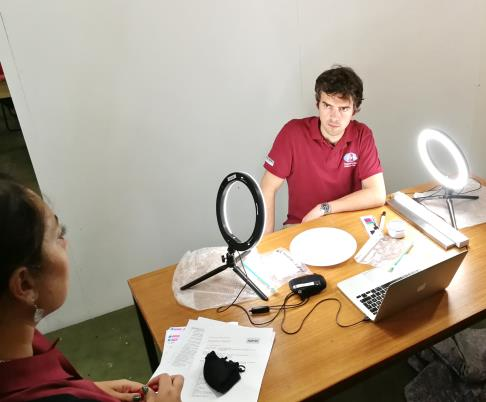Amadee-20-GEOS
Details
| Acronym | GEOS |
| Description | We identify the geological processes of the area with a series of geological techniques. The GEOS is comprised of four geoscience experiments Geomapping, Geomapping,Geomapping and Micrometeorite. |
| Principal Investigator (PI) | Seda Oezdemir E-mail: seda.ozdemirfritz@gmail.com |
| Organisation | Austrian Space Forum |
| Co-Investigators | Anna Losiak, OeWF / Polish Academy of Sciences, E-mail: Anna.losiak@oewf.org |
Summary

We identify the geological processes of the area with a series of
geological techniques. Besides defining these processes, we
significantly focus on Analog Astronauts geo-training
applications on the field and to create a potential AA training
model. The GEOS is comprised of four geoscience experiments:
(1) Geomapping: establishing the geological map of the working area, the area before the mission
to determine the geological and topographical features. These pre-identified features will work as the guide,
and fieldwork will provide a detailed view of a site; e.g., the optimized path that
the AAs follow and the best sample locations. During the mission, the map will be improved by
using the drone and rover outputs as well as AAs observations. After the mission pre- and post-
mission maps will be compared to optimize and improve the mission preparation phase.
(2) Geosampling: is the process of collecting data (e.g., rock and sand samples) from the sites
in order to obtain an understanding of the geology of the field.
The first two geoexperiments (geomapping and geosampling) are classic geological methods that
we use to understand the natural environment by using compositions and the age of the rocks to
determine the sequence of events.
(3) Geocompare: compare spatial information acquisition strategies between people with varying
levels of experience during the field work to determine how different people analyze spatial data
(thematical/geological maps and the natural environment), and how to more efficiently teach this
skill to both astronauts (-analog and -space) as well as field workers (e.g., geologists, civil
engineers, biologists, etc.)
(4) Micrometeorite: searches for micrometeorites within the collected sand samples in the field,
aiming to find these highest flux extraterrestrial materials on the earth's surface. This experiment
might provide a practical and achievable application which may also provide information about
Mars' history as well as the solar system.
Experiment Data
| Date | Files |
| 2021-08-15 | file descr |
| 2021-10-12 | 1 movie, 8x .jpeg |